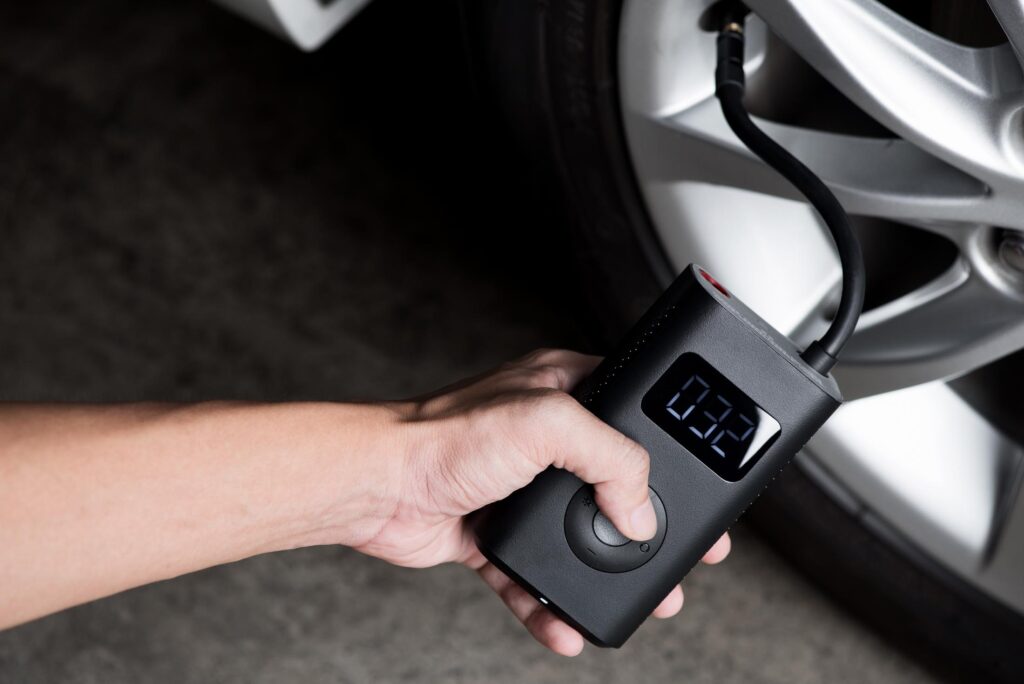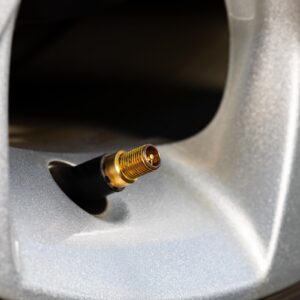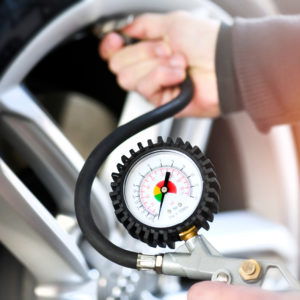Tire wear refers to the smooth patches you’ll find on your tires. It reduces the tire’s ability to maintain traction, affecting the smoothness of the ride and increasing the risk of car slips and ineffective braking.
Tires wear out in different ways, and knowing how each type occurs can help you prevent them.
Why Do Front Tires Wear on the Inside?
If your front tires are wearing on the inner only, it might be due to misalignment. Misalignment occurs when one side of the tire is tilted inward or outward, causing that side to absorb more pressure from the road and wear out faster. Misalignment can also cause outer tire wear.
Other Types of Tire Wear
Here are the different types of tire wear patterns and what usually causes them:
Center Tire Wear
A tire has center wear when only its middle part is worn out. It usually happens due to overinflation. When the tire’s center is bulging with so much air it’s coming in contact with the ground, that part absorbs all the pressure from driving.

Edge Tire Wear
Edge wear is when the edge of the tire is worn-out. It’s caused by underinflation, as the edge sags and makes contact with the road when the tire doesn’t have enough air. Under-inflated tires are also prone to uneven wear, which is often called feathering.
Cupping Tire Wear
Random smooth patterns on tires are called tire cupping. Worn-out vehicle suspension systems, struts, and shocks usually cause this type of wear.
Diagonal or Patchy Wear
Patchy or diagonal wear patterns develop when the tires are out of balance. These tires tend to wobble, resulting in a distinct wear pattern on the tires. Out-of-balance tires can also cause vibration in the steering wheel, as you’ll feel the imbalance the faster you go. Needless to say, it’s dangerous to drive with one on the road.
Symptoms of Tire Wear
Besides the visible tread wear patterns, here are some tire wear signs you need to look out for:
Vibration
Some tire wear patterns create vibration while driving, usually due to the tire tread wearing unevenly.
Tire Damage
Tire wear can result in damage, like small bulges and cracks. If you spot severe damage on your tire, it might be time to replace it.
Common Causes of Tire Wear
Different vehicular issues cause tire wear, but the most common reason is wheel misalignment. Besides that, here are some of the common culprits for tire wear:
Poor Tire Pressure

Poor tire pressure refers to over or under-inflated tires. Both cases result in one area of the tire sagging and absorbing all the pressure from the road.
Lack of Tire Rotation
Tire rotation involves moving the vehicle’s tires from one position of the vehicle to another. It helps evenly distribute tire wear among the four tires. Without rotation, the tires would develop uneven tire wear; some might have large smooth patches, while others have minimal wear.
Suspension System Issues
The suspension system is made up of different components that hold your wheel and tire in position. Damage in any of these components causes the wheels to wobble, which could result in uneven tire wear.
Similarly, damage within the steering system and a bent tie rod also causes suspension issues.
Damage within the steering system and a bent tie rod also causes suspension issues.
–Anthony Harlin, ASE Certified Master Automobile Technician
Reckless Driving
Reckless driving accelerates tread wear and causes uneven formation, as it places excessive pressure on tires.
How to Limit Tire Wear
Tire wear is inevitable, but there are preventive measures you can take to limit the process. Here are some steps you can follow to prolong the lifespan of car tires:
Monitor the Air Pressure
Keeping track of the air pressure lets you avoid over and under-inflated tires. You can find the proper amount of air pressure on the tires, the driver’s jamb/door, the driver-side passenger jamb/door, the car manual, and inside the fuel cap door, so you’ll know how much pressure your tires must have.
Rotate the Tires
Since the front tires take most of the pressure of stopping and steering, rotating between them with the rear evenly distributes the wear.
Better Driving Habits

Better driving habits include avoiding potholes, slowing down on curves, and more. Doing so prevents wear on the edges of your tire, leaks, or even misaligned wheels.
Check Wheel Alignment
Proper wheel alignment reduces tire wear and makes for smoother rides. Misaligned wheels may cause your vehicle to pull left or right, which could lead you to hit potholes or curbs. So it’s recommended to regularly have your wheel alignment checked.
When Should I Replace the Tires?
Replace your tires when they’re over six years old. The accumulated damage, wear, and tear can increase the risk of car slips and other accidents.
You should also have your tires replaced once they’re severely damaged. Watch out for leaks, punctures, or anything that causes driving discomfort.
Are Tire Wears Repairable?
Unfortunately, tire wear is irreparable. Because the damage IS on the rubber itself, the only solution is to have the tire replaced.
Fortunately, it’s possible to prolong the lifespan of tires by following precautionary steps, such as maintaining the appropriate air pressure.
Can I Drive With Worn-Out Tires?
It’s not recommended to drive with worn-out tires, as they are safety hazards for you, the passengers, and those around you. Driving with bald tires may cause slips, excess vibration, and difficulty in steering and braking.
Final Thoughts
Be sure to have worn-out tires checked out and replaced immediately. Attempting to drive with them may cause irreversible damage to your vehicle. Not only that, but they’re massive safety hazards out on the road.
Lok for the symptoms and match them with the different wear patterns to get an idea of what issue your tires are facing. This way, you can take measures to reduce the damage.
The Simple Way to Get New Tires

Enjoy the ultimate convenience when it comes to your tire shopping experience at CarParts.com with SimpleTire. Not only can you find tires that fit your vehicle and requirements, but you can also schedule their installation in a local shop or at your home by an expert team of mobile installers. On top of that, you can do all this with a few taps on your phone’s screen.
Anyone can use SimpleTire’s intuitive search function. Click the locator on their home page and enter your zip code. After setting your location, SimpleTire will find the nearest verified local shops to ensure fast delivery and give you the best pricing available.
SimpleTire lets you shop for tires by vehicle model or the size, brand, or type of tire you want. The more, the merrier—purchase four or more tires to get roadside assistance all day. And to set your mind at ease even further, SimpleTire provides tire replacement coverage for free.
So, what are you waiting for? Make CarParts.com and SimpleTire your first and only stop for competitively priced tires and reliable installation services at your preferred location. Visit us now and get great discounts with our sales promo for even more savings!
Any information provided on this Website is for informational purposes only and is not intended to replace consultation with a professional mechanic. The accuracy and timeliness of the information may change from the time of publication.
































